
I was doing a gravel ride the other day when I encountered a problem that I’ve only seen happen in the mountains. A first-world mountain problem, if you will. No one’s going to starve, get hurt, or die but it did sort of mess up my plans for the day.
There’s this thing that happens to creeks in the mountains in the winter. No matter how cold it gets, all but the smallest creeks tend to flow all winter long. They develop ice along their banks and they may freeze on the surface but there will almost always be running water underneath. Has something to do with the high specific heat capacity of water and the constant turnover from streamflow. Science! Without it, there would be no fish in Colorado’s rivers and streams.
But what can happen is, chunks of ice along the banks break off and float down the creek until they hit an obstacle like a downed tree, where they get trapped. Enough ice chunks get trapped and eventually you have a dam. Once dammed, all that flowing water jumps the banks and floods whatever happens to be nearby which, because it’s now standing water, proceeds to re-freeze.
What does this have to do with gravel riding? A few days ago I decided to check out a 4WD road that I had never ridden. The road goes up Marshall Pass but it’s different from the main road, which I’ve ridden several times. The main road, county road 200, is an old railroad grade. Because it was originally built for trains it’s a long, winding climb to the top. The 4WD road, officially county road 203, is a shorter, more direct route.

County Road 203 splits off of County Road 200 just past this old train trestle over Poncha Creek.
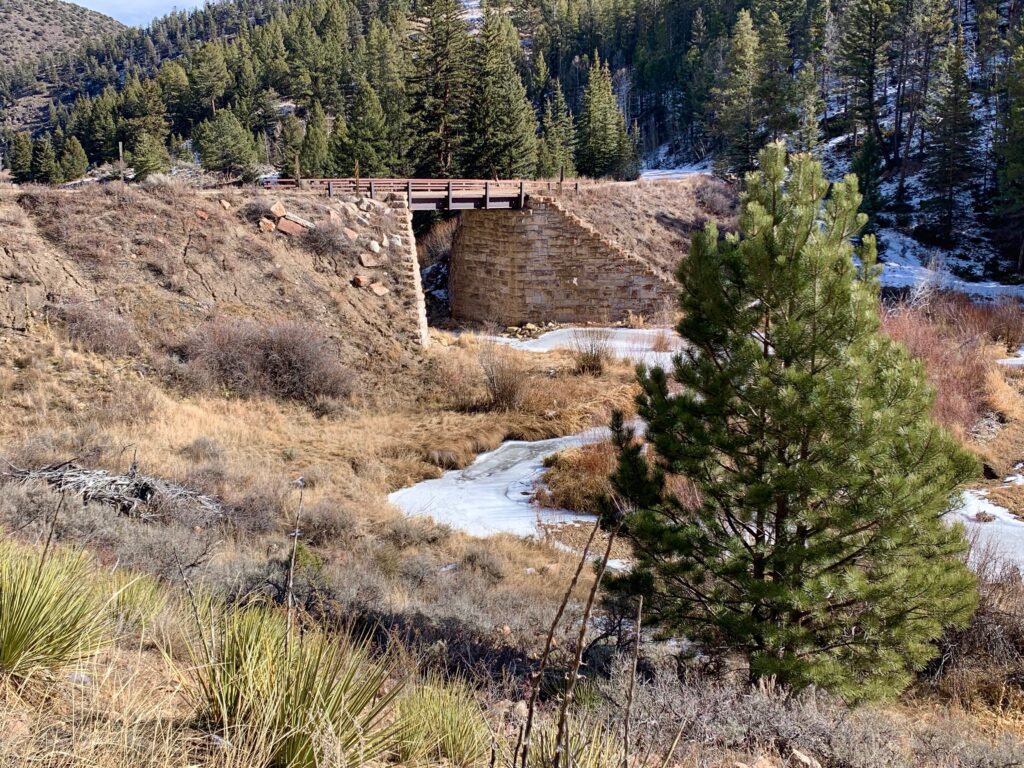
The road follows Poncha Creek all the way up the pass and meets the main road at the top. My plan was to make a loop by climbing County Road 203 to the top and then descending the main road.
When I say the road follows Poncha Creek, I mean it’s right next to it. In places the creek is less than three feet from the road. And therein lies the problem. About a mile up the road, I came to this. The creek had overflowed and flooded the road, which refroze into a long, narrow ice rink. The ice was solid and there were intermittent dry patches so I carefully rolled my way across it.
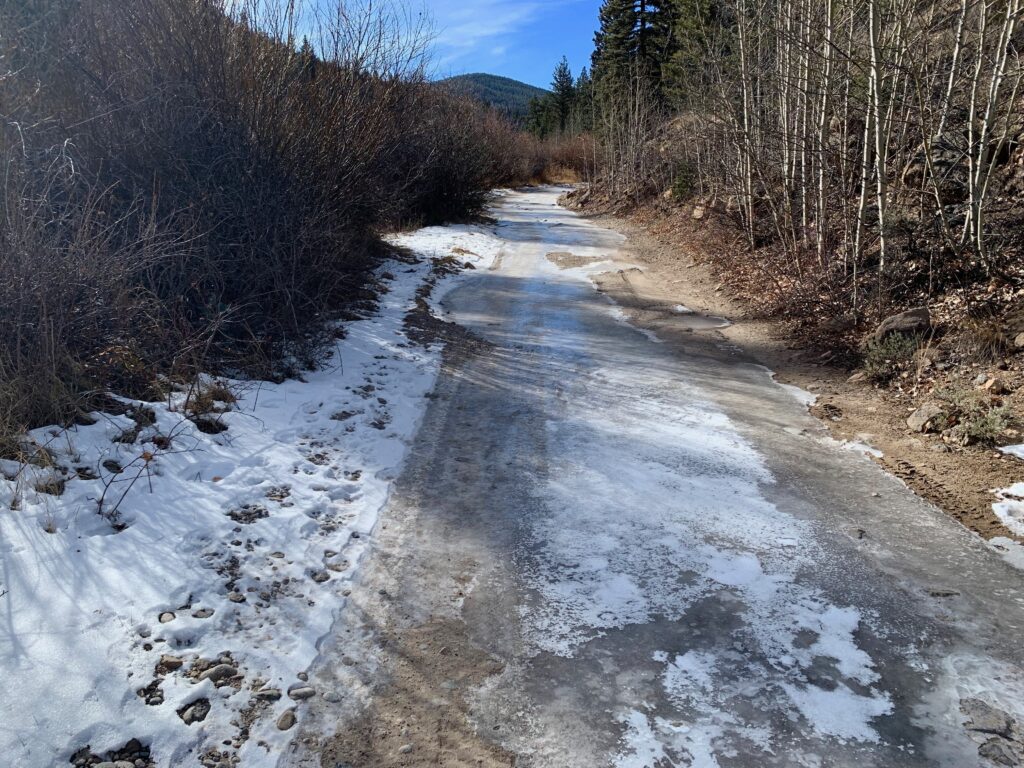

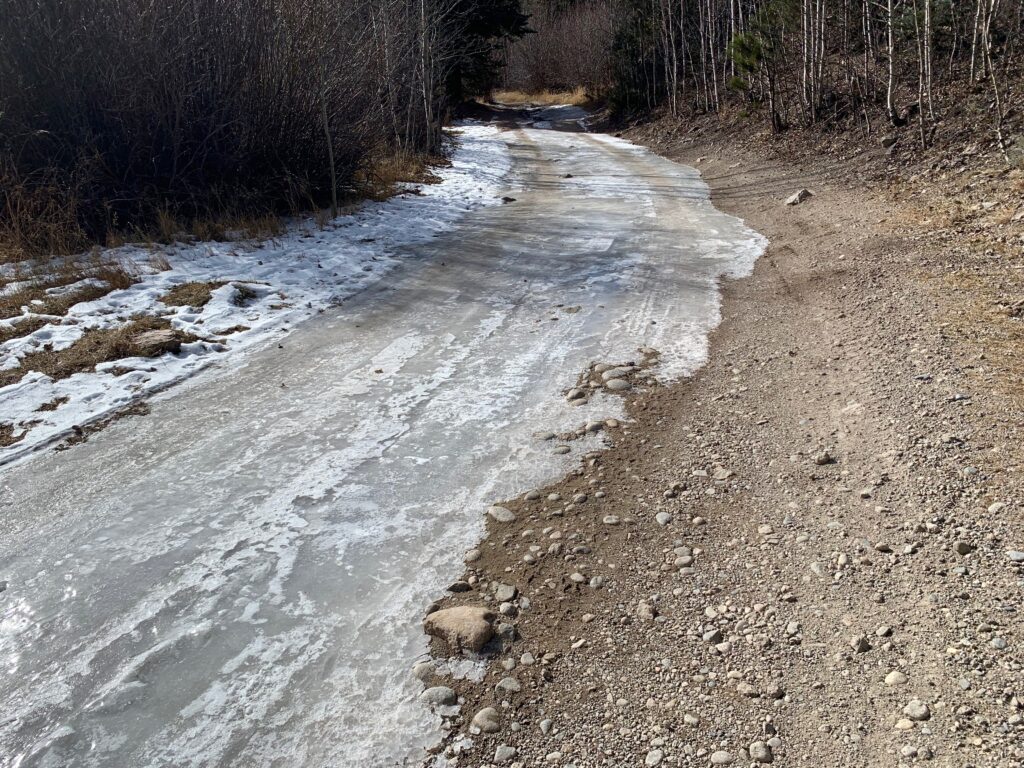
After a couple more miles I came to another one. This section was longer. Because someone had broken the ice driving a 4WD through it, I could see there was still flowing water underneath. Fortunately, hikers and bikers had the option of bypassing the ice using a short section of trail to the right of the road.

But less than a half mile later there was this. Deep ruts with blocky ice and water underneath. Whoever had driven through the previous section didn’t make it through this one. Their vehicle tracks end about a quarter of the way across. No clue how they got out. The sides of the road were lined with brambles so there was no way to detour around this section without getting scratched to oblivion and/or a flat tire. End of the line for me.

Seeing as I was less than halfway to my planned destination and because it’s in the area, I decided to make up for some of my lost mileage with a side trip to O’Haver Lake. I’d seen it many times in the summer; I figured I’d see what it looks like in the winter. I turned around and headed back down to county road 200.
Snow-packed road in a shady section heading to O’Haver Lake.
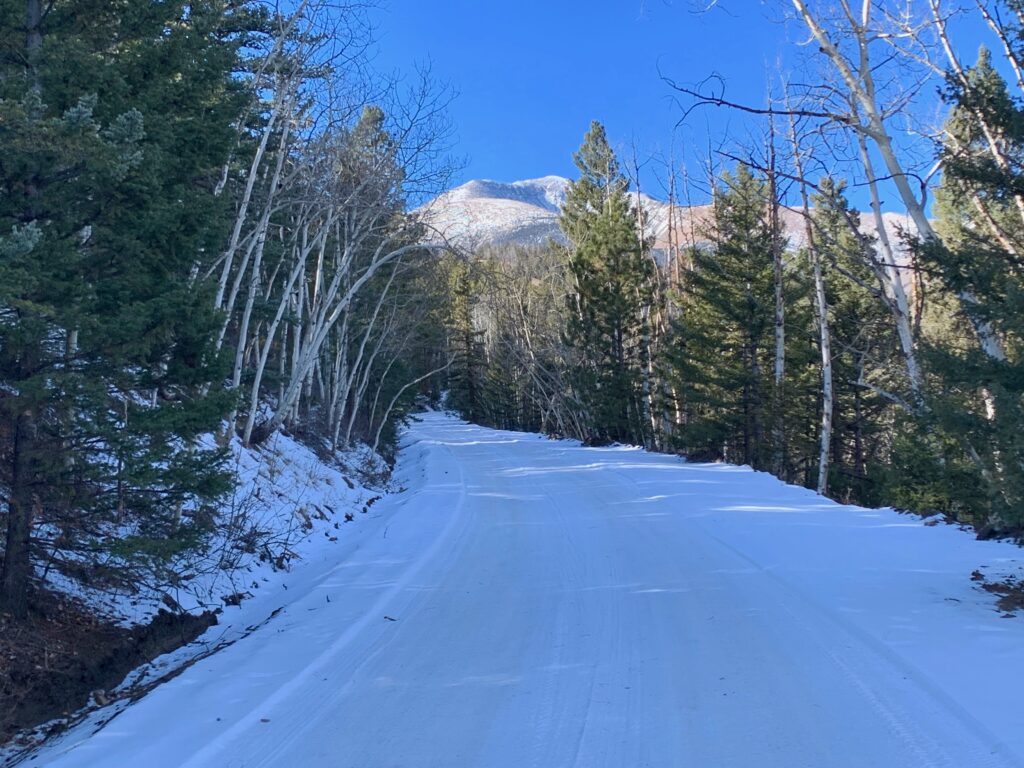
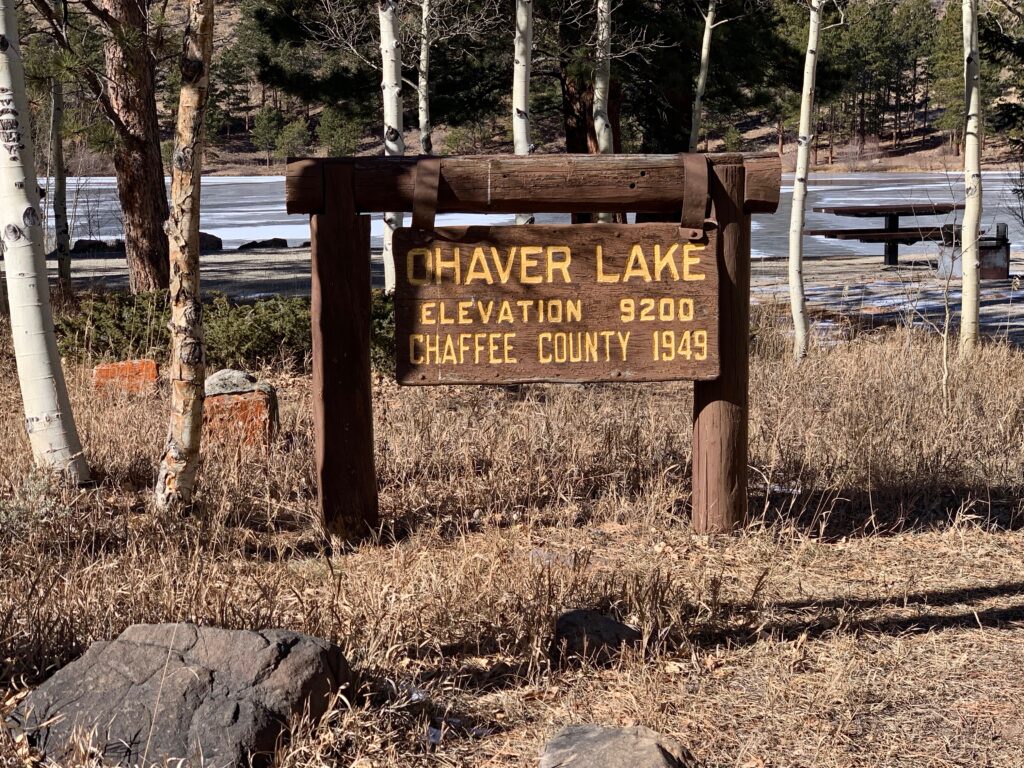

No problem with breaking ice here. The lake was frozen solid.

In fact, there were some guys ice fishing on it with their friendly golden lab.
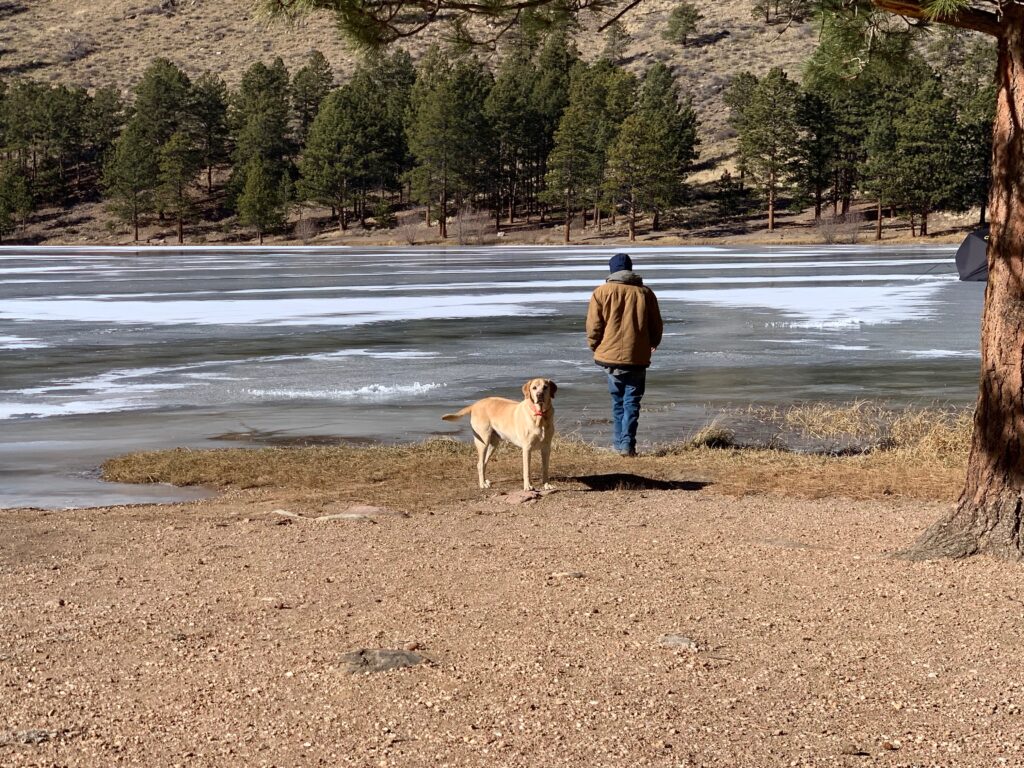
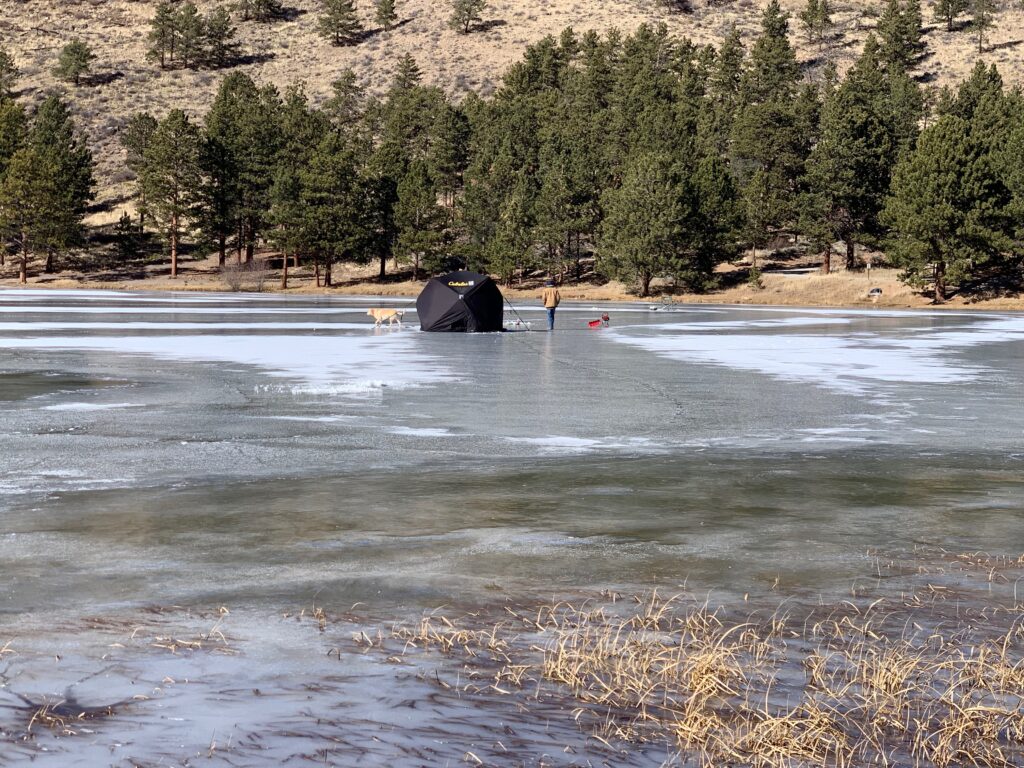
I sat down on a picnic table in a sunny spot near the shore for a snack before heading back to Salida. It was cold and windy. As I was sitting there, mixed with the sound of the wind was this eerie, almost electronic sound that reminded me of the phasers in Star Trek. I had never heard it before. It took me a while to figure out that it wasn’t some kind of animal or in fact, Captain Kirk. It was the ice. More specifically, it was the sound of the wind blowing across the ice. I couldn’t get a good recording of it but I found a link to a Tweet from Colorado Parks and Wildlife from a different lake that captures it perfectly.
Colorado Parks and Wildlife – Steamboat Lake
So I didn’t make it to my destination but like most rides around here it still ended up being pretty dang satisfying. And I’ll say this, if you ever get a chance to stand near a frozen lake in the wind, do it. It won’t disappoint.